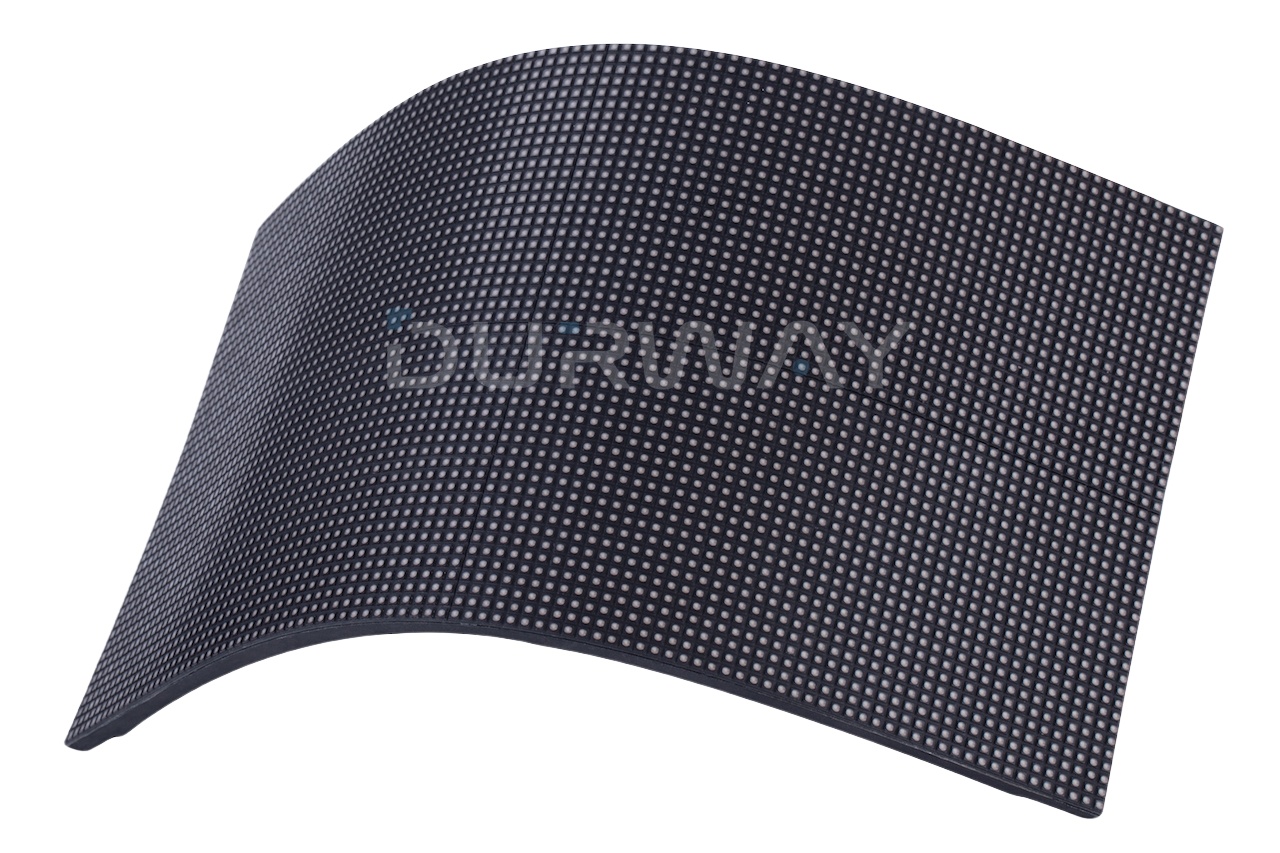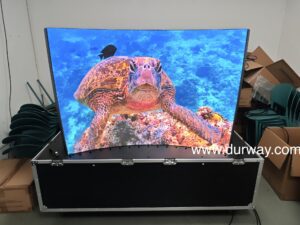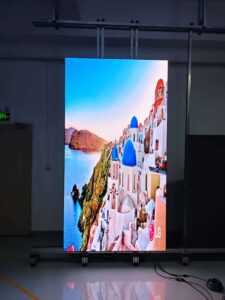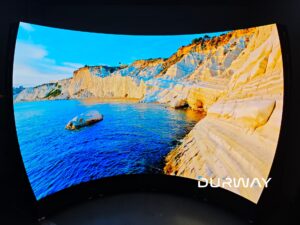Flexible LED screens have rapidly emerged as a game-changing innovation in the digital display market. Their ability to bend, curve, and wrap around surfaces opens new dimensions for design, communication, and engagement. From immersive retail installations to dynamic architectural facades, the flexible LED screen is redefining how brands and businesses interact with space and audiences.
What Is a Flexible LED Screen?
A flexible LED screen is a lightweight, bendable display module that can be shaped into curves or irregular forms without compromising visual performance. Unlike rigid LED panels, these displays use soft PCB and rubberized materials that allow bending to a certain degree—often up to 120 degrees depending on model and pixel pitch.
They are commonly used in installations that require high customization, such as cylindrical pillars, curved walls, circular stages, and artistic structures. Most models come in modular formats, making them easy to assemble and configure for both indoor and outdoor environments.
Structural Forms of Flexible LED Screens
Flexible LED screens can be manufactured in a variety of shapes and forms to fit diverse architectural and design needs:
Curved (Concave/Convex): Perfect for wrapping around columns or creating wave-like visual effects.
Flat Panel (Soft): Maintains the standard rectangular shape but allows for gentle bending and easy mounting on uneven surfaces.
Spherical (Ball-shaped): For 360-degree viewing in showrooms or museums.
Ribbon-Shaped: Narrow, elongated displays used in fashion retail, building facades, or escalator wraps.
Custom Shapes: Any non-standard design—letters, symbols, or abstract contours—can be built with flexible modules.
These configurations are especially effective in venues where creativity and space optimization are critical.
Material Options: Iron vs. Aluminum
The frame material plays a crucial role in the weight, heat dissipation, and installation flexibility of flexible LED displays:
Iron: The traditional choice—sturdy and cost-effective. Suitable for fixed installations with minimal concern about weight.
Aluminum: Offers a lightweight alternative. Ideal for suspended or mobile setups where structural load and handling matter.
Businesses must evaluate the use-case before selecting the appropriate material, especially for transportation, events, or architectural displays.
Key Components and Technical Features
Understanding the core components is crucial for any business evaluating flexible LED screen technology:
Pixel Pitch: Ranges from P1.25 to P10. Smaller pitch means higher resolution.
Brightness: Often exceeds 600 nits for indoor
Viewing Angle: Wide angles ensure consistent visibility in all directions.
Refresh Rate: Typically 1920Hz to 3840Hz for flicker-free video performance.
Panel Material: Soft silicone or rubber backing with magnetic modules.
These attributes ensure flexibility without sacrificing clarity, making them suitable for mission-critical digital signage and immersive experiences.
Business Benefits of Using Flexible LED Screens
Creative Freedom
Flexible modules allow architects and designers to execute previously impossible ideas—like wrapping a display around a circular pillar or creating 360-degree cylindrical video sculptures.Lightweight and Space-Saving
Their thin, bendable nature makes them ideal for installations in compact or curved areas without heavy support structures.Modular Customization
Each screen can be adapted to any shape or size, offering scalability and creative adaptability for different project needs.High ROI through Engagement
In settings like retail or events, flexible LED displays attract attention, increase dwell time, and improve brand perception.Energy Efficient and Durable
Modern screens are designed for long operational hours with lower power consumption and minimal heat output.
Where Are Flexible LED Screens Used?
Retail Stores: For immersive window displays, product highlights, or interactive zones.
Events and Exhibitions: Curved backdrops, circular stages, or 3D LED setups.
Architectural Installations: Integrated into building facades or public art.
Transportation Hubs: Wrapped around pillars or corners for flight/train information.
Corporate Spaces: Conference rooms and lobbies for branded environments.
Considerations When Buying a Flexible LED Screen
Before investing, businesses should consider:
Environment: Indoor vs. outdoor use affects brightness, waterproofing, and heat management.
Content Requirements: High-definition video or static graphics will determine pixel pitch.
Structural Form & Material: Choose the shape and weight that match your space and mounting infrastructure.
Vendor Expertise: Choose suppliers with strong after-sales service, warranty, and technical documentation.
Why Flexible LED Is the Future of Display Technology
The convergence of hardware flexibility, modular engineering, and advanced control systems positions flexible LED screen technology at the forefront of digital transformation. As businesses seek more immersive and dynamic environments, flexible displays offer the adaptability and wow factor to stand out in saturated markets.
Looking to integrate flexible LED screens into your next project?
Contact Durway for expert consultation, design, and turnkey LED solutions tailored to your industry needs.
👉 www.durway.com








